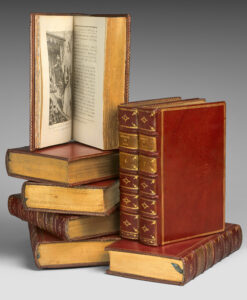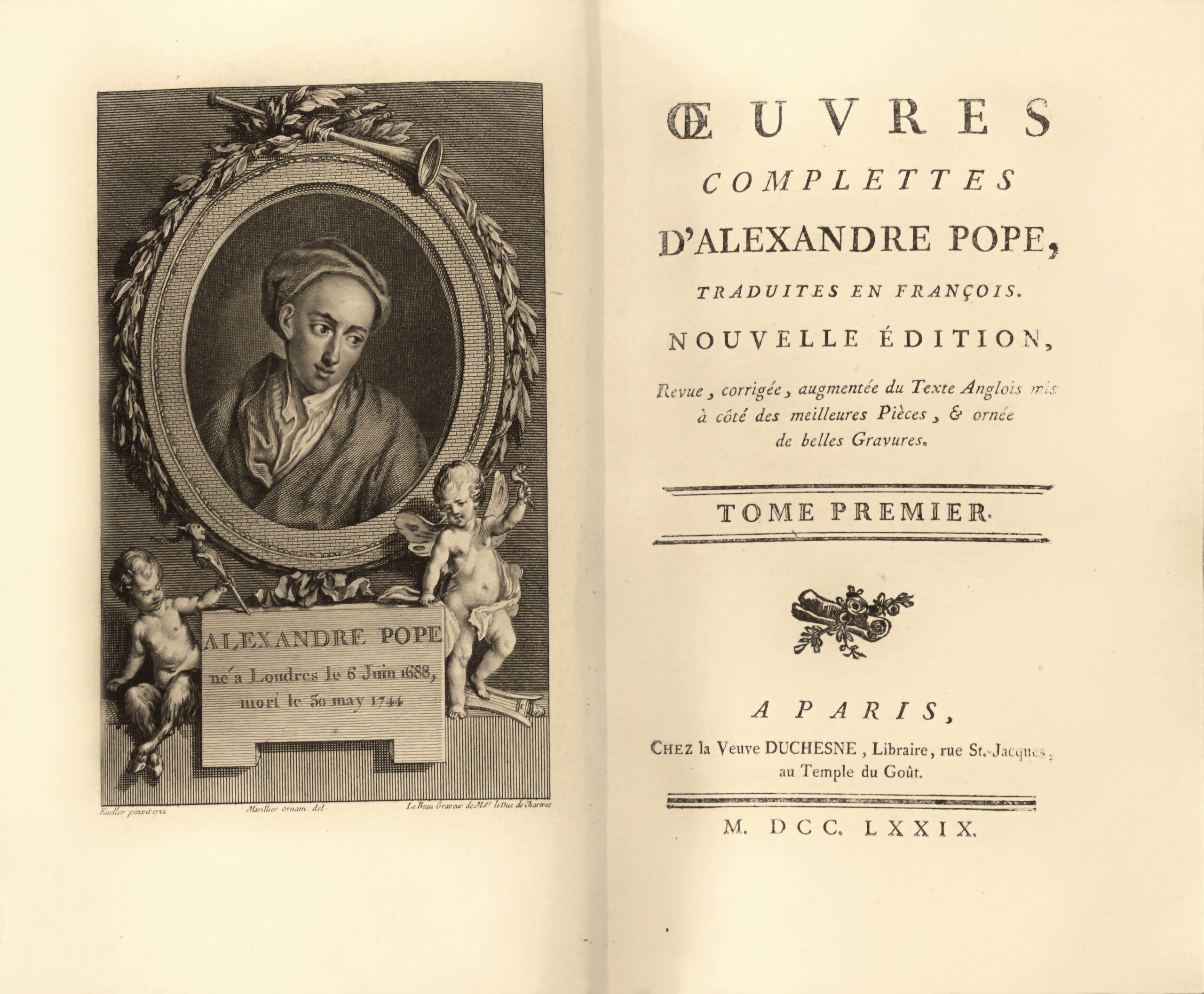Paris, published by Veuve Duchesne, 1779.
8 volumes octavo, illustrations. Full red morocco, triple gilt fillet around the covers, spine with raised bands and adorned, decorated edges, inner guilloche, gilt edges. Contemporary binding.
195 x 123 mm.
One of the deluxe copies printed on large Holland paper.
« Very beautiful illustrations mentions Cohen, col. 817, containing “1 portrait by Kneller, ornamented by Marillier and engraved by Lebeau, and 17 figures by Marillier, engraved by Dambrun, Duflos, Gaucher, Godefroy, Halbou, Ingouf jeune, de Launay, Lebeau, Macret, Poncet, Romanet, and Trière.” (Cohen)
The list of subscribers only mentions 200 recipients excluding provincial booksellers.
“This edition, published by Abbé Joseph de la Porte, contains a History of the Life and Works of Pope, and translations or imitations by several authors. The Essay on Criticism was translated into prose by Etienne de Silhouette, and into verse by Abbé Duresnel; the Rape of the Lock removed was translated into prose by Abbé Guyot des Fontaines, and into verse by Marmontel; the Temple of Fame, into prose by the editor, into verse by Madame Du Bocage; the Eloisa to Abelard, into prose by the editor, into verse by Charles-Pierre Colardeau; the Essay on Man, into prose, by Silhouette, into verse by Abbé Duresnel. The other pieces seem to have been translated by Abbé de la Porte.
The figures drawn by Marillier were engraved by C. Macret (1), Ingouf junior (2), Dambrun (2), P. Duflos (1), Godefroy (1), A. de Launay (1), L. Halbou (3), C.-L. Gaucher (1), Ph. Trière (2), A. Romanet (1), Le Beau (1) and N. Ponce (1).” (James de Rothschild, no. 1056).
“Pope’s work received an enthusiastic reception in France and paved the way for the introduction of English literature on the continent. One would not do justice to Pope’s poetry by assessing it by the standards of romantic poetry, which involves a very different sensibility and taste; it would be better compared to 18th-century music, Handel’s for example, and more so with the Palladian architecture of England. What Vitruvius and Palladio were to architects, Horace was to Pope; to the symmetry of architectural parts corresponds the symmetry of heroic couplets; the ‘lucidus ordo’ lends ideas finesse and serenity, and a crystalline assurance which is, too, a form of high poetrye .” Mario Praz.
“ ». Mario Praz.
« Pope is the best poet in England and, at this moment, in the entire world… I consider his ‘Essay on Criticism’ superior to Horace’s ‘Art of Poetry’ and ‘The Rape of the Lock’ surpasses, in my opinion, ‘The Lutrin’ by Despreaux.” Voltaire.Beautiful copy in red morocco leather of the period from Ex-musaeo of Hans Fürstenberg.


